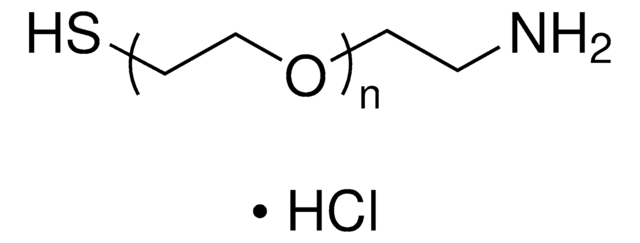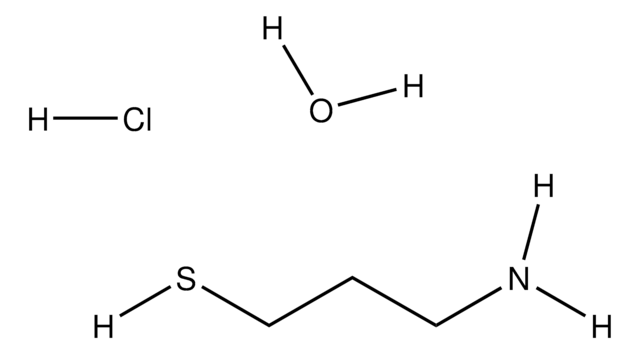901941
Thiol poly(ethylene glycol)-block-poly(lactide-co-glycolide)
PEG average Mn 5,000, PLGA average Mn 15,000, lactide:glycolide 50:50
Synonym(s):
Thiol-PEG-b-PLGA, Thiol-PEG-PLGA
About This Item
Recommended Products
description
Identity: Conforms to structure
form
powder
feed ratio
lactide:glycolide 50:50
lactide:glycolide 50:50±5 (by NMR)
mol wt
PEG Mn 4000-6000 g/mol (by NMR)
PEG average Mn 5,000
PLGA Mn 13500-16500 g/mol (by NMR)
PLGA average Mn 15,000
color
white
storage temp.
−20°C
Related Categories
Application
Storage Class Code
11 - Combustible Solids
WGK
WGK 3
Flash Point(F)
Not applicable
Flash Point(C)
Not applicable
Certificates of Analysis (COA)
Search for Certificates of Analysis (COA) by entering the products Lot/Batch Number. Lot and Batch Numbers can be found on a product’s label following the words ‘Lot’ or ‘Batch’.
Already Own This Product?
Find documentation for the products that you have recently purchased in the Document Library.
Customers Also Viewed
Our team of scientists has experience in all areas of research including Life Science, Material Science, Chemical Synthesis, Chromatography, Analytical and many others.
Contact Technical Service




![4-[4-(1-Hydroxyethyl)-2-methoxy-5-nitrophenoxy]butyric acid ≥98.0% (HPLC)](/deepweb/assets/sigmaaldrich/product/structures/232/152/e26ea38f-f1d4-4f88-a61b-466cd10aa1dc/640/e26ea38f-f1d4-4f88-a61b-466cd10aa1dc.png)

